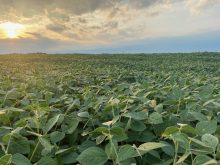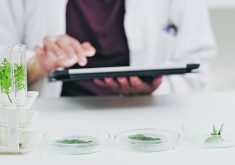Digital sequence information, which was discussed at last year’s COP 15 convention on biological diversity, has significant implications for agriculture.
DSI is the available information that exists online about a plant specie’s genetics once it has been sequenced.
Discussions have been ongoing about access to DSI and the benefits that may occur, such as a new pharmaceutical drug or vaccine, or a new cosmetic product.
In an agricultural context, it relates to the development of new plant varieties with improved agronomic traits, such as higher yield potential, improved disease resistance or tolerance to alkaline soils.
Read Also

Budget seen as fairly solid, but worrying cracks appear
The reaction from the agriculture industry to prime minister Mark Carney’s first budget handed down November 4th has been largely positive.
Biodiverse-rich countries rightly advocate that if a new drug, vaccine or cosmetic product is developed based on the genetics found in a plant local to their country, an economic share of the benefits should accrue to the country where the genetic resource originates.
One option that has gained considerable recognition is to implement a one percent tax on the sales of products that have benefitted from DSI. Large, multinational pharmaceutical and cosmetic firms can incorporate a one percent tax into the price of their products, affording this tax with fewer challenges than those facing public sector agricultural research.
Product commercialization in agriculture is different.
In Canada, the public sector is the leading developer of all crop varieties other than canola, corn and soybeans. Public developers, be they Agriculture Canada or universities, will be challenged to pay a one percent sales tax.
If this tax was applied to the sale of all bread products in Canada, like how it would be applied to all cosmetic products sold, it would potentially result in a cost in the tens of millions of dollars.
Crop variety research is funded through competitive grants and plant breeders rely on a series of grants to conduct their research. No single grant funds an entire crop-breeding program.
The challenge then becomes, where would cash-strapped Canadian universities access funds to pay a one percent sales tax on a new crop variety that could be worth tens of millions of dollars per year? There is no way any university could afford this cost.
One solution is to have public breeders develop varieties up to the point that they enter field trials. Then, the rights would be sold to the private sector to complete the research, submit the variety for approval and the private sector would become the variety developer.
However, in some cases private firms may have no interest in the research, which would lead to a complete halt of further research and commercialization of some new varieties.
The proposed one percent tax has the potential to end public sector variety development, not to mention the global role played in agricultural research through the sharing of plant and animal genetics by the Consultative Group on International Agricultural Research.
There may be alternatives for agriculture.
An exemption could be granted for the use of DSI in the commercialization of new agricultural products. Given the impossibility of universities being capable of paying the millions resulting from a one percent sales tax, the agricultural DSI should be treated separate from pharmaceutical or cosmetic DSI.
This would allow public sector crop development to continue.
As well, the benefits new varieties bring for farmers is greater than a one percent tax. The new crop variety would lead to higher yields for farmers in the area where the DSI originated.
Ultimately, including agriculture in the implementation of a one percent DSI sales tax would have negative effects on public sector research around the world.
Stuart Smyth is an associate professor in the University of Saskatchewan’s department of agricultural and resource economics and holds the Agri-Food Innovation and Sustainability Enhancement Chair. This article first appeared on the SaiFood website. It has been edited for length.















